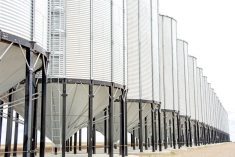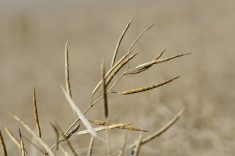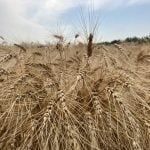Glacier FarmMedia—Very few changes will be expected when Statistics Canada (StatCan) releases its principal field crop acreage estimates for the 2024-25 marketing year on June 27.
It will be the second survey-based acreage report for 2024-25 from StatCan after the first was released in March. Since then, much of the Prairies received normal to above-normal amounts of precipitation while cooler temperatures have delayed development in most crops.
Nevertheless, the trade is not anticipating any major revisions compared to the March report, including MarketsFarm Pro analyst Mike Jubinville.
Read Also

U.S. livestock: Feeder cattle hit contract highs on tight supply
Chicago | Reuters – All Chicago Mercantile Exchange feeder cattle futures and most live cattle futures hit contract highs on…
“I’m not necessarily expecting dramatic changes from what expectations were in the springtime,” he said.
StatCan’s March estimate for canola acres would have been closer to the lower end of trade estimates for the June report, but the area will very likely not reach 22 million.
“I suspect that the interest in growing canola continues to be there if there’s an extended outlook of strong crush capacity for the year ahead. If we have an emergent energy market for vegetable oil, then canola growers will probably be interested in that,” Jubinville added.
Tony Tryhuk of RBC Dominion Securities in Winnipeg also doesn’t expect major changes to canola acres compared to months earlier.
“I think there were losses in (Manitoba’s) Interlake. I think there were price-incentivised increases in acres in Saskatchewan and Alberta. It could be a bit of a wash. It could be a little bit higher than the 21.4 (million acres) in the last report,” he said. “I think the real focus is going to be yields. That’s what the trade is looking at right now.”
Similarly, all wheat area has a near-equal chance of either an expansion or contraction of acres compared to the March report. Ken Ball of Ventum Financial Corp. of Winnipeg said he didn’t hear about any major shifts in acreage from his clients, but his projection for wheat acres resides at the higher end of estimates.
“For a while there, pushing into springtime through April and May, wheat prices were really perking up,” Ball said. “There was a lot of chatter about (quality) problems in Russia that might have prompted some extra wheat acres. Not a lot, but a few.”
Jerry Klassen of Resilient Commodity Analysis in Winnipeg estimates between 19.6 million and 19.7 million acres of spring wheat, a slight increase from the March report. However, some of those acres would be taken from durum, which he pegged at approximately 6.1 million.
“I think the durum acreage at 6.344 (million) in March was probably a shade too high,” he said. “I think a lot of farmers realized that after the report … We’re not going to see that bump in acreage as we thought we were going to see earlier in March.”
Klassen expects a decline in oats acreage due to growers looking at other crops, while also anticipating more barley acres as growers tout the crop’s weather-resilient qualities. After the wet spring on the Prairies, he also felt bearish about soybean, lentil and pea acres.
Just like in previous StatCan acreage reports, concerns remain that the data was collected months ahead of time, affecting the accuracy of the agency’s projections. The March estimates were determined using numbers collected in December and January.
“I’m always uncertain as to whether (collecting data months in advance) is the best way to do a survey,” Jubinville said. “(But) this number is obviously going to carry a greater degree of accuracy to what the real number is relative to the first survey done on Christmastime.”















